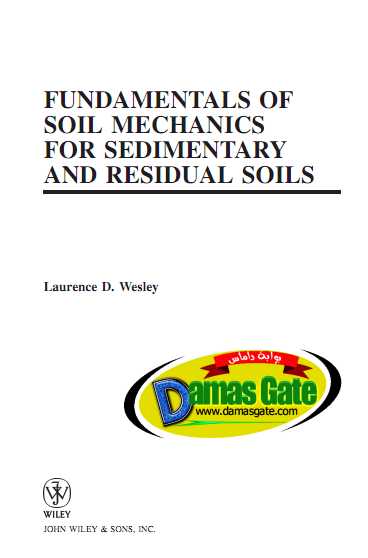Fundamentals of Soil Mechanics for Sedimentary and Residual Soils

PREFACE
This book was originally planned with the title Soil Mechanics for Geotechnical
Engineers. I mention this because its target readership is indeed
geotechnical engineers, including those who teach and train geotechnical
engineers, and students aiming to become geotechnical engineers. Its name
was changed to the present title following discussions with my publisher;
together we agreed that the current title is preferable as it conveys more
clearly the distinctive content of the book.
My first aim in writing this book has been to give equal coverage to
residual soils and sedimentary soils. I have believed for a long time that
there is a need for such a book, because many graduates are leaving universities
throughout the world without even hearing of residual soils, let alone
having any understanding of their properties. This is despite the fact that in
not a few cases, the universities from which they graduate are surrounded
by residual soils on every side, as far as the eye can see.
All graduates should have a basic knowledge of residual soils, first,
because they are likely to encounter residual soils from time to time during
their working life and, second, because there are important characteristics
of residual soils that do not fit into the conventional concepts or the “theoretical
framework” of classical soil mechanics. The application of these
concepts to residual soils can produce quite misleading conclusions. A prime
example is the use of stress history, and the e-log p graph associated with
it, as an explanation of soil behavior. Stress history and the concepts of
normal consolidation and overconsolidation have little or no relevance to
residual soils.
Download
*